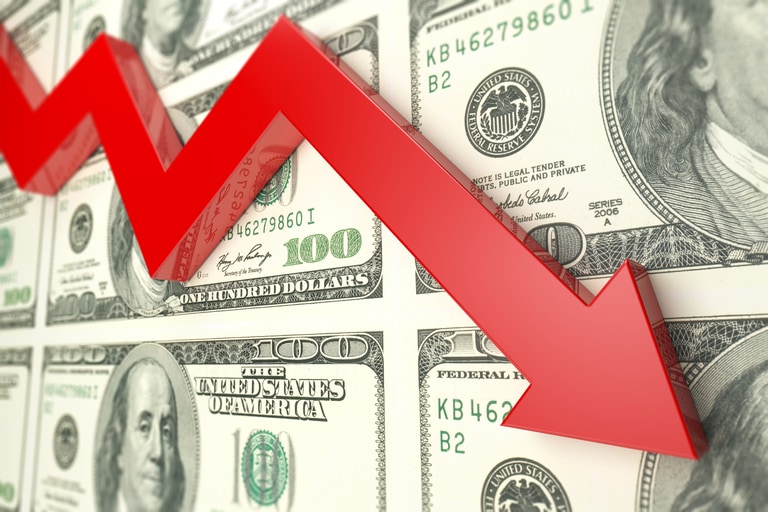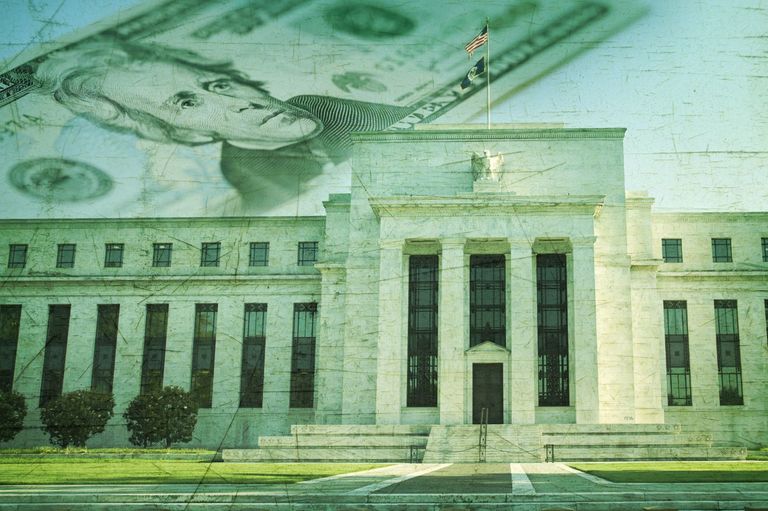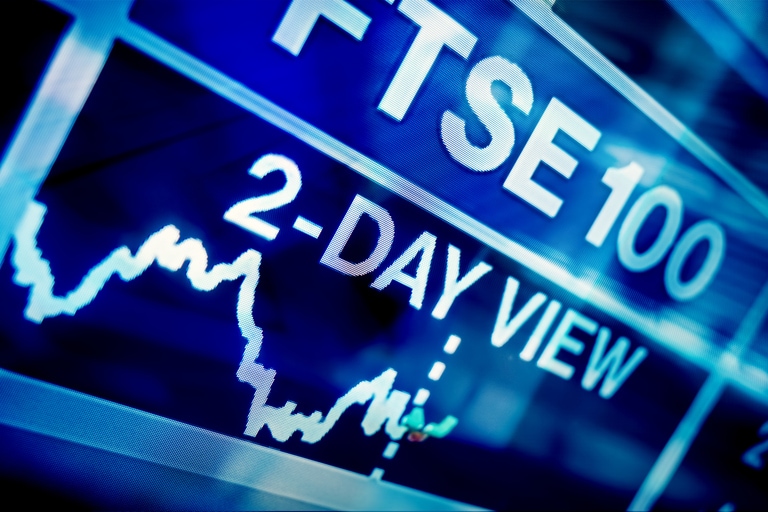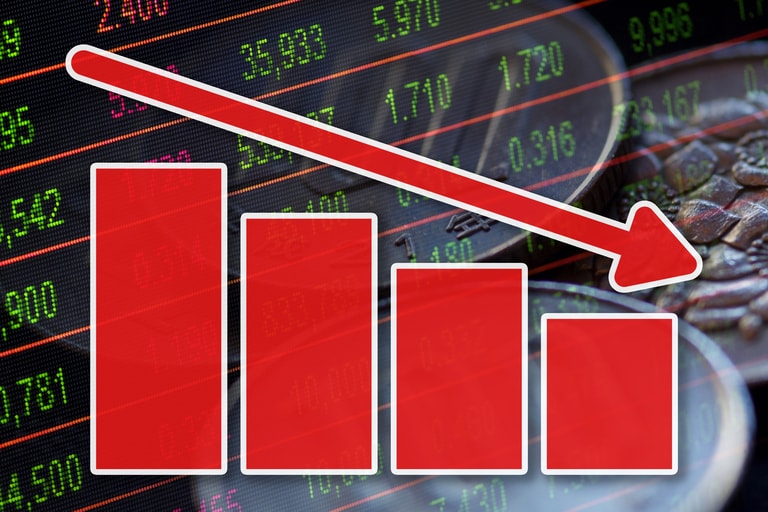All eyes will be on the Bank of England on Thursday when it meets to discuss its latest response to soaring inflation. Policymakers have raised rates at each of their last five meetings and a further increase in the cost of borrowing appears nailed on. They may opt for another cautious quarter-point rise, but there is a chance we’ll see the first half-point rate hike in the Bank's 25 years of monetary policy independence. Meanwhile, Friday’s US jobs report for July could add to fears that the country’s labour market is weakening.
On the earnings front, FTSE 100 companies HSBC, BP and Rolls-Royce are due to issue half-year updates, while in the US erstwhile meme stocks Robinhood Markets and AMC Entertainment report their Q2 numbers.
OUR TOP THREE EVENTS FOR 1-5 AUGUST:
Tuesday – BP half-year results
BP’s shares have traded sideways since it reported its Q1 numbers back in May, although they did touch two-year highs in June as oil prices spiked. Since then, the UK government has imposed a windfall tax on the oil and gas sector’s higher-than-expected profits to help fund support for households that are struggling to pay their energy bills.
Oil and gas majors like BP and Shell have seen their profits surge this year on higher prices for fossil fuels following the pandemic and Russia’s invasion of Ukraine. This has brought a significant benefit to BP, which has experienced various challenges since the Gulf of Mexico oil spill in 2010.
As part of BP’s exit from Russia, the company wrote down $29bn in late February as it divested its stake in Russian oil giant Rosneft. That pushed the company into a loss of $20bn for Q1. Putting the write-down to one side, the business performed well as underlying profits rose to $6.25bn, up from $2.63bn a year ago. Oil and gas production and operations accounted for $4.68bn of the total, beating expectations for $4.5bn.
Despite the better-than-expected return, BP said it would stick to its capex target of $14bn to $15bn this year, with $5bn of that going into low-carbon energy. This suggests that renewables still only make up around a third of BP’s total capex, although the firm says that it expects energy transition spending to increase to around 40% by 2025.
The government’s so-called “temporary targeted energy profits levy” (in other words, a windfall tax) will see UK oil and gas firms pay an extra 25% tax on top of the 40% headline rate that they already pay on their UK profits. In the wake of then-chancellor Rishi Sunak’s announcement, BP said it would review its investment plans in the North Sea, as well as its plans to invest £18bn into the UK economy by 2030. This threat appears to have been dropped following clarification of a “sunset clause” that would remove the levy at the end of 2025. BP’s UK boss Louise Kingham said that, with the additional clarity on the end of the levy, there shouldn’t be an impact on the company’s immediate plans.
Thursday – Bank of England interest rate decision
After the US Federal Reserve raised rates by 0.75 percentage points for the second month in a row on Wednesday, the Bank of England is now under pressure to deliver a bumper interest rate hike of its own. Although that puts a half-point rise very much on the table, it’s worth noting that, since the Bank of England was given independence over monetary policy in 1997, it has never raised rates by more than 0.25 points. This speaks to the central bank’s conservative mindset, potentially making it difficult for policymakers to shift their thinking. Rate hikes at each of the last five meetings have lifted the Bank’s base rate to 1.25%.
With inflation now at 9.4% and, by the Bank of England’s own admission, set to climb even higher, policymakers may feel compelled to increase rates more aggressively. With strike action now part of the background noise, wage growth is likely to remain well underpinned over the coming months. At its June meeting the Bank’s Monetary Policy Committee once again issued a baffling statement of intent over its response to inflationary pressure. They said that they would act “forcefully” on inflation if necessary, adding that they expect inflation to peak at an eye-watering 11% by year-end, an upgrade from their previous estimate of 10%. All this begs the question, what would it take for the MPC to vote for a bigger hike?
Sadly, this sort of mixed messaging is nothing new. The Bank’s previous governor, Mark Carney, was likened to an “unreliable boyfriend” by MPs after issuing mixed signals over possible interest rate rises. Things have hardly improved under Carney’s successor Andrew Bailey, who himself has drawn the ire of senior politicians in recent months. In fairness, the Bank of England, like all central banks, faces a thankless task in these difficult times. However, to some extent Bailey and co. are authors of their own misfortune, encumbered by a complete inability to admit their mistakes or think outside the box.
The Bank’s mandate is to protect price and financial stability. If it wants to prevent this mandate from being called into question, it should focus on the task in hand and stop telling the rest of us not to ask for a pay rise. As the Bank gets ready to issue a new set of economic projections on Thursday, a quarter-point rate rise is the least we can expect, but a history-making half-point increase cannot be ruled out.
Friday – US non-farm payrolls (July)
The last US jobs report provided evidence that the country’s labour market could be weakening. The report showed that the world’s largest economy added only 372,000 non-farm payrolls in June, the weakest number this year, but still higher than economists’ estimates of 265,000. The May figure was revised downwards to 384,000.
Unemployment was steady at 3.6%, while wage growth also remained stable at 5.1% compared to the upwardly revised May figure of 5.3%. However, the labour force participation rate unexpectedly dipped to 62.2%. With job vacancies at record levels, participation ought to be increasing.
Although the US labour market remains solid overall, new claims for unemployment benefits have been rising week-on-week over the past three months. The number of new claims climbed above 250,000 in the week to 16 July, having hit a 50-year low of 167,000 back in April. This rise in jobless claims is a sign that the US labour market could be starting to soften.
The jobs report for July is expected to show that 250,000 non-farm jobs were added. However, that headline number is of lesser importance than wage growth at the moment, which is expected to remain steady at around 5%.
MORE KEY EVENTS (1-5 AUG):
Monday 1 August
HSBC half-year results
Shares in HSBC are up more than 8% year to date, outperforming its three major peers in the UK banking sector – Barclays, Lloyds and NatWest. This outperformance has been all the more surprising given HSBC’s exposure to the Chinese economy, which has been badly affected by intermittent lockdowns this year.
The bank reported profits after tax of $3.4bn in Q1, a reduction of $1.1bn on the same quarter last year, primarily due to an increase in credit impairment charges of $600m, as a result of potential negative impacts from the Ukraine war. The Asia business and the UK business contributed the bulk of the banks’ profits before tax, with Asia accounting for $2.8bn and the UK $1.2bn. Lending demand remained decent during Q1, but the bank warned that rising inflationary pressure, as well the prospect of further impairment provisions, may present risks to the outlook. The bank also warned that the impact of the Ukraine war and a weaker outlook in its China markets would mean that further stock buybacks were unlikely for now.
In the upcoming half-year numbers, the focus is likely to be on further impairment provisions, margins, and management’s response to calls from Ping An Insurance Group for HSBC to spin off its Asia business to unlock shareholder value. These calls gained traction after HSBC was forced to suspend its dividend in 2020 due to the pandemic. While management have pushed back thus far, the calls could get louder after the bank took the controversial step to allow the formation of a Chinese Communist Party committee in its investment banking subsidiary inside China.
Tuesday 2 August
Reserve Bank of Australia interest rate decision
Having hiked rates by half a percentage point at each of its last two meetings, the RBA is expected to make it a hat-trick this week as it looks to play catch-up having been woefully behind the curve earlier this year. The RBA board said that they expected to take further steps in the process of normalising monetary policy in the coming months.
With rates currently at 1.35% the RBA remains well behind the Reserve Bank of New Zealand which realised very early on that inflation was starting to become increasingly embedded across the world. New Zealand’s headline rate is currently at 2.5%.
RBA Governor Philip Lowe expressed confidence that the Australian economy could withstand higher rates, despite concern over the pressure it would put on mortgage rates. Unemployment is currently at 50-year lows of 3.9%, while vacancies are at record highs. With Q2 CPI rising from 5.1% to 6.3% the RBA is likely to raise rates by at least half a point on Tuesday, as the strength of the US dollar is pushing an inflation wave its way.
BP half-year results
See top three events, above
Uber Q2 results
Despite concerns over rising costs as Uber increases drivers’ pay, the ride-hailing and food delivery company posted a decent set of Q1 numbers. Revenue came in at $6.85bn, well above expectations, with gross bookings valued at $26.45bn. Net losses came in at $5.9bn, mainly because of unrealised losses from its stakes in Grab, Aurora and Didi.
For Q2 the company expects to see a big jump in gross bookings to between $28.5bn and $29.5bn, driven by outperformance in its rapidly expanding groceries and deliveries business. Losses are expected to come in at $0.25 a share.
Airbnb Q2 results
The holiday lettings company had a decent start to the year as Q1 revenue came in at $1.51bn, beating expectations. The company also upgraded its Q2 revenue outlook to between $2.03bn and $2.13bn amid hopes that tourism could return to normal this summer after two years of disruptions. The upgrade doesn’t appear to have impressed shareholders, however, with the shares down 47% year to date and sitting at their lowest level since the IPO back in December 2020.
The company narrowed its net loss to $19m in Q1, down from $1.2bn a year ago. Bookings in Q1 exceeded pre-pandemic levels for the first time, coming in at 102.1m. This is likely to have improved further in Q2 as people continued to enjoy greater travel freedoms. With that in mind, the company could well post its first ever quarterly profit. Forecasts point to Q2 profits of $0.52 a share.
Wednesday 3 August
Global services PMIs (July)
The most recent flash PMI numbers for Europe and the US indicated a sharp drop in economic activity in July, raising concerns that increases in energy and food prices are starting to act as a brake on consumption. In Germany and the US sentiment dipped into contraction territory, though France fared slightly better, perhaps because the French government is insulating consumers from the worst of the energy price spike. The UK is looking slightly more resilient, but even here the economy is facing challenges as orders start to show signs of slowing.
Moderna Q2 results
Moderna posted an impressive set of numbers in Q1, with revenue coming in at $6.07bn, well above expectations of $4.71bn. Profits were worth $8.58 a share. Covid-19 revenue was $5.39bn, which also came in ahead of consensus. The company maintained its full-year guidance of $21bn in vaccine sales, although CFO David Meline cited uncertainty over sales in the second half of the year as the company looks to adapt its vaccine to new variants. During Q2 it was reported that Moderna had agreed a £1bn deal with the UK government to build a new vaccine manufacturing centre, the location of which is yet to be decided. Profits for Q2 are expected to come in at $4.54 a share.
Robinhood Markets Q2 results
The popping of the meme-stock bubble and sharp declines in bitcoin have eviscerated Robinhood Markets’ business model – and its share price. After the company posted its Q1 results in May, the shares hit a record low of $6.90, well below its IPO price of $38. Revenue fell by 43% in Q1 compared to a year earlier, coming in at $299m. That was well below estimates of $356m. As a result, the company announced it was laying off 9% of its staff.
Equities trading was the biggest revenue faller in Q1, down 73% to $36m, while cryptocurrency revenue fell 39% to $54m. Losses in Q1 came in at $0.45 a share. Although losses are expected to narrow in Q2 to $0.23 a share, the outlook is set to remain bleak. The company appears to be doubling down on its crypto business, but the recent declines in bitcoin and other cryptos are likely to present challenges.
The business received a boost in May when it was reported that Sam Bankman-Fried, founder of crypto exchange FTX, had taken a 7.6% stake in the business. While this move prompted takeover speculation, a bid is unlikely to be forthcoming because of Robinhood’s share structure.
Thursday 4 August
Bank of England interest rate decision
See top three events, above
Rolls-Royce half-year results
Rolls-Royce shares hit an 18-month low ahead of the Q1 numbers back in May, but have performed much better since then, albeit in a fairly confined range. The various problems with the resumption of civilian air travel have meant that this year’s anticipated revenue rebound has been slow to materialise. Nonetheless long-term flying hours in Q1 were 42% higher than for the same period last year, although that’s quite a low bar.
The company remains active on various fronts. It announced a deal with Qantas for 12 Trent XWB-97 engines to power its A350s, along with a service agreement for those engines. In addition, the sale of ITP Aero for £2bn is expected to complete soon with the proceeds earmarked for debt pay-downs. Rolls-Royce also appears to be making strides in its power systems business. The small nuclear reactor project, announced last year following investment from private sources and the government, has the potential to be a huge revenue driver, despite significant upfront costs. Bosses have shortlisted six potential sites for a factory to build the reactors. Meanwhile, Russia’s invasion of Ukraine has given a lift to Rolls-Royce’s defence business.
In Q1 management said trading was in line with expectations. The company maintained full-year guidance of low- to mid-single-digit revenue growth, while operation margins also remained unchanged. The company added that it expects to be free cash flow positive towards the second half of the year.
AMC Entertainment Q2 results
The cinema chain operator managed to post a lower-than-expected loss of $0.52 a share when it reported its Q1 numbers, helped by higher footfall as moviegoers returned to enjoy the big screen experience. The new Spiderman and Batman films helped push revenues up to $785.7m, above estimates of $769.9m and a huge improvement on last year’s $148.3m.
Revenue from admissions accounted for $443.8m of total revenue as the cinema chain saw over 39m people come through its doors. The company cut its operating losses to $167m, down from $428m in the year-ago quarter.
Further progress is likely to have been made in Q2, driven by releases such as Fantastic Beasts: The Secrets of Dumbledore, Dr. Strange and Top Gun: Maverick. The summer blockbuster season, which runs in to Q3, typically boosts sales of both tickets and refreshments.
On the most recent earnings call, AMC’s CEO Adam Arons said he was hopeful that Q4 box office receipts could exceed pre-pandemic levels, adding that AMC is looking to acquire more theatres and move into other industries. While appearing confident in the outlook, Arons must be aware that the business still carries debts of over $5.5bn. It might perhaps be prudent to stabilise the balance sheet before expanding or diversifying. Losses for Q2 are expected to come in at $0.21 a share.
Friday 5 August
US non-farm payrolls (July)
See top three events, above
Index dividend schedule
Dividend payments from an index's constituent shares can affect your trading account. View this week's index dividend schedule.
Selected company results
| MONDAY 1 AUGUST | RESULTS |
| Activision Blizzard (US) | Q2 |
| Avis Budget Group (US) | Q2 |
| HSBC Holdings (UK) | Half-year |
| Pearson (UK) | Half-year |
| Pinterest (US) | Q2 |
| TUESDAY 2 AUGUST | RESULTS |
| Airbnb (US) | Q2 |
| BP (UK) | Half-year |
| Caterpillar (US) | Q2 |
| Cazoo Group (US) | Q2 |
| Denny's (US) | Q2 |
| Direct Line Insurance Group (UK) | Half-year |
| Domino's Pizza Group (UK) | Half-year |
| Electronic Arts (US) | Q1 |
| Greggs (UK) | Half-year |
| Marriott International (US) | Q2 |
| Match Group (US) | Q2 |
| Starbucks (US) | Q3 |
| Travis Perkins (UK) | Half-year |
| Uber Technologies (US) | Q2 |
| WEDNESDAY 3 AUGUST | RESULTS |
| Dynatrace (US) | Q1 |
| Endeavour Mining (UK) | Q2 |
| GoDaddy (US) | Q2 |
| Jones Lang LaSalle (US) | Q2 |
| Moderna (US) | Q2 |
| New York Times (US) | Q2 |
| Robinhood Markets (US) | Q2 |
| Taylor Wimpey (UK) | Half-year |
| Vimeo (US) | Q2 |
| THURSDAY 4 AUGUST | RESULTS |
| AMC Entertainment (US) | Q2 |
| ConocoPhillips (US) | Q2 |
| Dropbox (US) | Q2 |
| Duke Energy (US) | Q2 |
| GoPro (US) | Q2 |
| Hawkins (US) | Q1 |
| Kellogg (US) | Q2 |
| Lyft (US) | Q2 |
| Meggitt (UK) | Half-year |
| Mondi (UK) | Half-year |
| Papa John's International (US) | Q2 |
| Portillo's (US) | Q2 |
| Rolls-Royce Holdings (UK) | Half-year |
| SeaWorld Entertainment (US) | Q2 |
| Serco (UK) | Half-year |
| Shake Shack (US) | Q2 |
| Vertex Pharmaceuticals (US) | Q2 |
| Virgin Galactic Holdings (US) | Q2 |
| Wayfair (US) | Q2 |
| Zoetis (US) | Q2 |
| FRIDAY 5 AUGUST | RESULTS |
| Hargreaves Lansdown (UK) | Full-year |
| London Stock Exchange Group (UK) | Half-year |
| Western Digital (US) | Q4 |
| WPP (UK) | Half-year |
Company announcements are subject to change. All the events listed above were correct at the time of writing.
Disclaimer: CMC Markets is an execution-only service provider. The material (whether or not it states any opinions) is for general information purposes only, and does not take into account your personal circumstances or objectives. Nothing in this material is (or should be considered to be) financial, investment or other advice on which reliance should be placed. No opinion given in the material constitutes a recommendation by CMC Markets or the author that any particular investment, security, transaction or investment strategy is suitable for any specific person. The material has not been prepared in accordance with legal requirements designed to promote the independence of investment research. Although we are not specifically prevented from dealing before providing this material, we do not seek to take advantage of the material prior to its dissemination.







